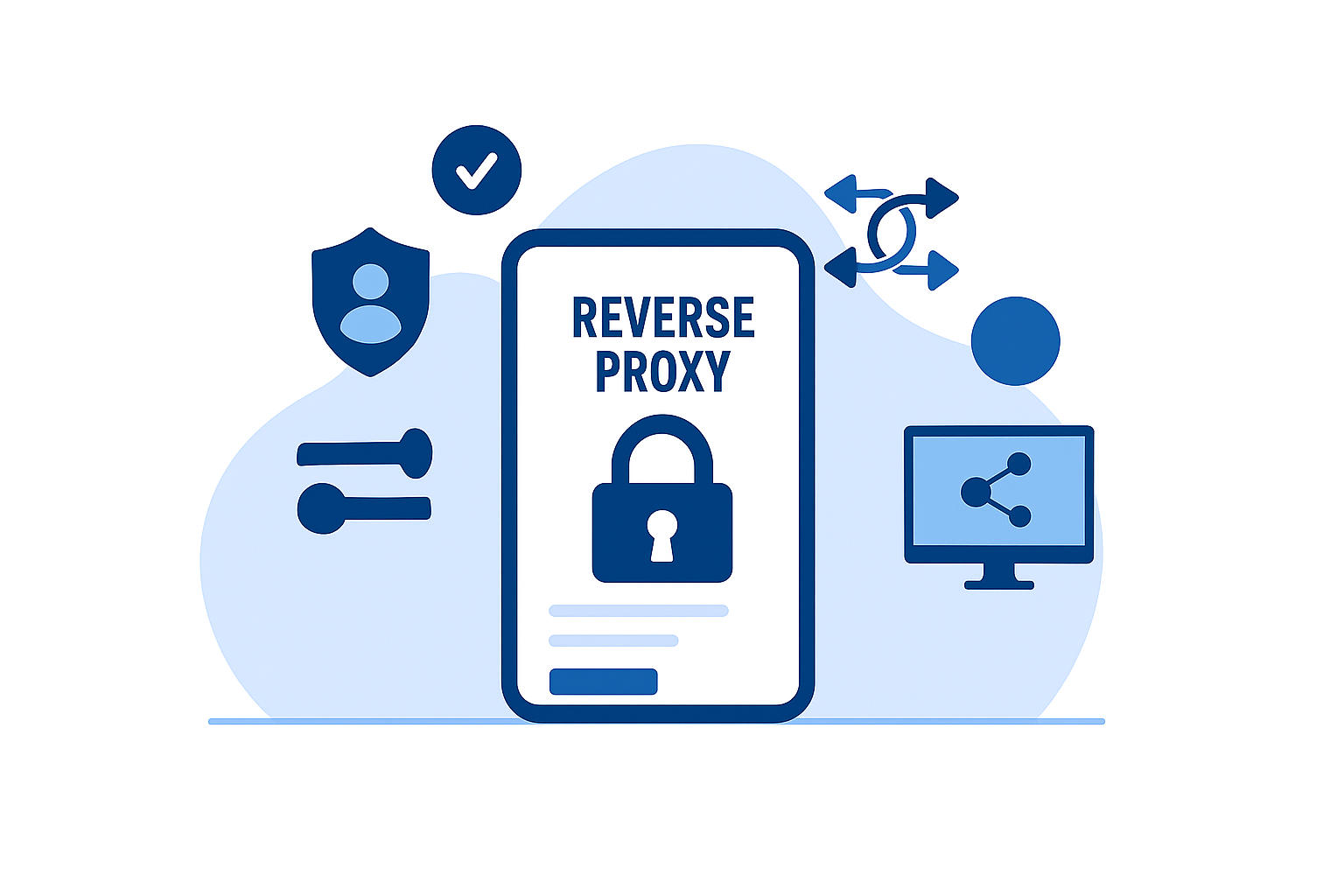Have you ever considered why some websites load nearly instantly while others present an empty screen? The answer lies in an important measurement called Time To First Byte, also known as TTFB. On the surface, it seems like a technical term, but it is actually very simple and highly crucial. This is the starting point in a user's journey towards content visibility.
In this article, we will go through what TTFB is, why it matters, and how you can optimize it for your site to be even faster. Want to make a good first impression? Alright, let's dive in.
What is Time to First Byte (TTFB)?
Time To First Byte (TTFB) refers to the duration it takes for the first byte of a web page to reach a request sender's browser. A byte is an eight-bit digital information unit representing one character in computing. In other words, it measures how long it takes for someone to click on something until they start getting data from the server. At this point, the user has not yet received all the elements on the page.

Why is TTFB important?

So why does TTFB matter? We have all heard the phrase "Good things come to those who wait." However, this phrase does not hold water in today's world, where everything needs to be done quickly over the internet. Time To First Byte is crucial because it sets the stage for the user's experience. If first impressions count, then your website should have a speedy TTFB that leads clients to their desired pages smoothly. Otherwise, they will feel frustrated and leave your website without hesitation. According to Google statistics, a 32% bounce rate could increase with every 2-second delay in page loading speed.
TTFB affects more than just your site's bounce rate; it is also a major component of Google's Core Web Vitals. There are three main metrics that make up the majority of Google's Core Web Vitals, all contributing to your site's overall performance score. Let's go over these metrics and how Time to First Byte plays a part in them:

Cumulative Layout Shift (CLS)
Cumulative Layout Shift (CLS) measures the number of unexpected layout shifts on a webpage. While TTFB does not directly impact CLS, it can indirectly affect its performance. For example, if your TTFB is slow, critical resources like CSS stylesheets might be delayed. If your site's CSS stylesheets load after the browser has already rendered the rest of your content, the layout will adjust, causing a shift. This, in turn, results in a poor user experience and a lower CLS performance score.
Largest Contentful Paint (LCP)
Largest Contentful Paint (LCP) tracks the time it takes for the largest content element on the page to be visible. A lower TTFB may bring about a faster LCP by causing server response times to speed up and letting the browser start rendering the page earlier. For example, if TTFB is high, the entire rendering process will be delayed, which might negatively affect LCP.
Interaction to Next Paint (INP)
Interaction to Next Paint (INP) measures the overall responsiveness of a webpage by tracking the latency of every interaction during the page life cycle. When TTFB is very high, poor INP may be experienced because it will result in delayed initial loading as well as other interactions, thereby slowing down the whole website.
The Side Effects of a Poor TTFB
Poor site performance doesn't just mean a slow website; it also impacts other important areas of your eCommerce store's success, like:
Reduced Search Rankings: Poor Core Web Vitals (CWV) can lower your site's visibility in search engine results, negatively impacting your SEO performance. To put it simply, fewer people will visit your website.
Higher Bounce Rates: No one likes a slow site. Users are likely to leave if pages load slowly or are unresponsive.
Decreased User Engagement: Lower interaction rates may result from slow and unstable websites, affecting overall user engagement.
Lower Conversion Rates: Frustrated by poor performance, users make fewer purchases and conversions.
Negative User Experience: A subpar browsing experience due to poor CWV metrics reduces customer satisfaction and loyalty.
Increased Cart Abandonment: Slow loading times during checkout can cause more customers to abandon their carts, wasting your efforts to get them that far.
Damage to Brand Reputation: A slow and unstable website can negatively impact the perception of your brand's reliability and professionalism.
To enhance the user experience, boost engagement rates, and ultimately increase sales and customer loyalty, your TTFB and Core Web Vitals should be given the most attention. To learn more on the details of Google's Core Web Vitals and the importance in improving conversion rate optimization, check out our article here.
What is a Good Time to First Byte?

Google advises keeping your Time To First Byte (TTFB) below 200 milliseconds to maintain a responsive, user-friendly website design. A TTFB ranging between 200 milliseconds and 1.5 seconds indicates that improvements could be made, while anything above 1.5 seconds shows poor performance, potentially discouraging visitors. Optimizing TTFB is critical for any webmaster who wants to see their business perform exceptionally well and deliver an excellent user experience.
How to Measure Your TTFB
So, where can one find their store's Time to First Byte? Fortunately, there are multiple options, tools, and methods. Some common ways to evaluate TTFB are as follows:
Web Browser Developer Tools
Most modern web browsers have built-in developer tools that can measure TTFB. For example, in Google Chrome, you can access the Developer Tools by pressing F12 or right-clicking on an area of the page and selecting "Inspect." Then, go to the Network tab and refresh the page. You will find the TTFB displayed in the network request section called "Waiting for Server Response."

Online Performance Testing Tools
Various online tools measure TTFB and provide detailed performance analyses of your website. The most common tools include:
- Google PageSpeed Insights-provides details on your site's performance, including Google's Core Web Vitals and TTFB.
- GTmetrix – offers a complete performance report with metrics on TTFB.
By regularly measuring and monitoring your TTFB, you can identify potential bottlenecks and take steps to optimize your website's performance, ensuring a faster, more responsive user experience.
How to Improve Your TTFB
Now that you understand why it is vital to know where Time To First Byte is located, let's proceed to how we can make it better, which is the core part of this post.
1. Enable Next-Gen Image Formats: Images are crucial for purchasing decisions, but they can slow down your page. By converting your store's images to next-gen formats like WebP, you can reduce image sizes and improve load times. To learn more about the importance of using next-gen image formats and how to implement them, read our article on Next-Gen Images.
2. Leverage Caching: Implement caching mechanisms at both the server and browser levels to speed up the retrieval process by serving static files directly from the cache or files that don't change often. Nostra employs this strategy in its cutting-edge delivery, maximizing smart caching and advanced performance optimizations. This approach is highly advantageous for handling the dynamic needs of your eCommerce store, leading to significant performance improvements.
3. Utilize a Content Delivery Network (CDN): A CDN can distribute your content globally, reducing the distance between the server and user. Services like Cloudflare and Akamai cache your website's assets, leading to quicker TTFB. However, traditional CDNs have some drawbacks. They primarily focus on storing lightweight static content and may not serve richer media elements such as video or audio. While some modern CDNs support various media types, including video and audio through adaptive bitrate streaming, they may not fully address the dynamic and personalized content needs of today's sophisticated web applications. This is where Nostra comes into play.
We’ve designed an ideal solution to these issues—our hybrid server-side rendering product, the Edge Delivery Engine™ , includes a smart caching solution applicable even for dynamic content, with more than 310 edge locations worldwide within a 50-mile radius of 97% of the global population. Our software operates serverless functions running on our edge servers, deciding before loading pages, hence faster content serving to users. This translates into a 20-30% improvement in page load times and a 5-10x decrease in Time to First Byte.
4. Implement Gzip Compression: Compress your HTML, CSS, and JavaScript files using Gzip compression so that they can be served more efficiently. Website load times and overall performance may increase by compressing these files. Most modern servers support Gzip, and turning it on is quite simple. You'll notice the difference in how fast your site loads for visitors with minor adjustments.
5. Regular Monitoring and Testing: Use tools like Google PageSpeed Insights, WebPageTest, and GTmetrix to keep an eye on your TTFB regularly. This will help identify issues early and allow you to take corrective measures promptly. Always take the time to monitor your metrics!
Unlock the potential of your eCommerce store by consistently following these steps and regularly reviewing your site performance. Just imagine how fast your website could be if its TTFB were decreased five or tenfold, with page performance increased by 20–30%—and think of what that would do for your SEO ranking. Nostra can make this a reality.
Book a demo with Nostra today to transform your online presence and drive more sales.
.svg)

.svg)
.svg)
.svg)

.svg)








